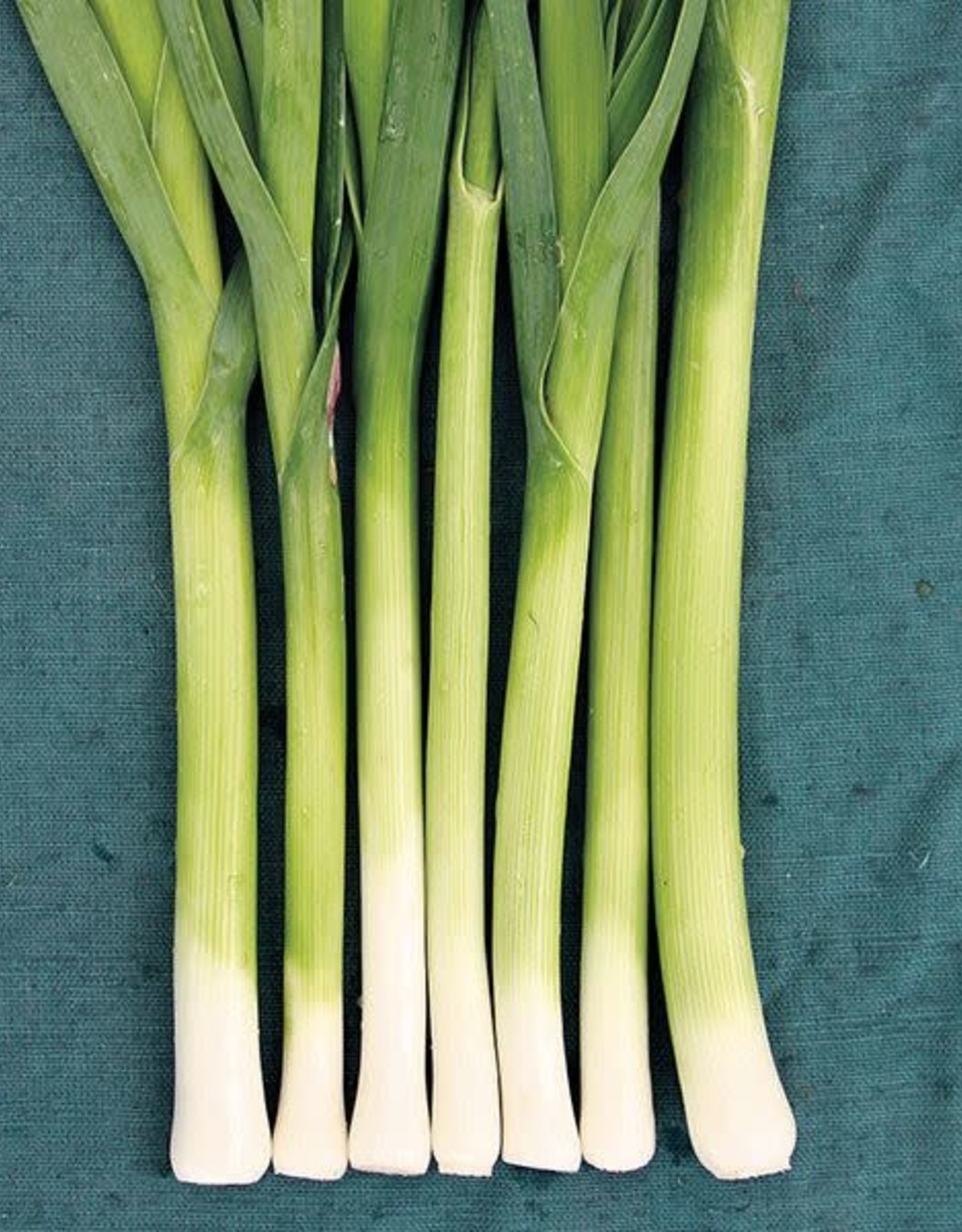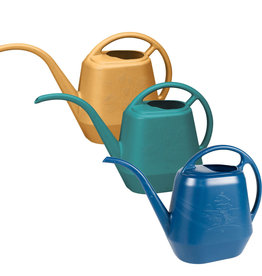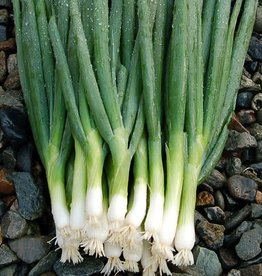HM Alto Leek 1/64 OZ
| Availability: | In stock (11) |
Photo and Description Credit - High Mowing Seeds
Popular, fast growing, early summer leek with nice cylindrical shape and thick, white shaft.
Tall Bulgarian-type that can be left to mature for beautiful full-bodied leeks or harvested early for delicately flavored bunching leeks good for salads or lightly sauteed.
- Summer crop
- Versatile
9,500-11M seeds/oz (10, 250 avg.). M=1,000, MM=1,000,000
Seeding Rate
6 seeds/ft
Cultural Info
Leeks (Allium ampeloprasum) are a non-bulbing member of the Amaryllidaceae family, which includes garlic, onions, chives and scallions.
- European Leeks are short and thick stemmed.
- Turkish Leeks are long and thin stemmed.
Soil Nutrients and Requirements
Well drained soil with high fertility and pH 6.2-6.8 will grow the best leeks. They do not tolerate acid soil especially as young seedlings. 80 lbs/A nitrogen is recommended. Sidedress 4-5 weeks after planting. Weed free raised beds are ideal.
Seeding Depth
1/4"
Plant Spacing
Thin to 6”
Row Spacing
24”
When to Sow
Days to maturity are from transplanting; add 20-30 days if direct seeding. Direct seed soon as soil can be worked outdoors or into a cold frame or start transplants 10-12 weeks before planting date, sowing seeds thickly into flats, ¼” apart or into 1.5” plugs. Transplant when plants reach 10-16” tall planting 6” deep, with only a few inches of leaves need to be remaining above the soil.
Other Considerations
For longer, blanched stalks, hill soil around the plants at least two times during the summer. Leeks compete poorly with weeds.
Harvest
Harvest at any stage of maturity, but flavor is usually best in fall after a few cold nights. Some fall planted varieties may even overwinter for an early spring crop.
Storage
Leeks can be dug up and hilled in into a root cellar or cold storage area. At around 35 degrees, they will keep in this way for a few months.
Pest Info
- Onion Thrips thrive in hot dry weather and can be discouraged by heavy rain or overhead irrigation. Lacewing larvae, pirate bugs and predatory thrips are natural predators.
- Onion Maggots overwinter in the soil. They feed on the roots of young seedlings, causing wilting and sometimes seedling death. Crop rotation and beneficial nematodes can be helpful.
Disease Info
- Botrytis leaf blight (Botrytis squamosa) develops as small lesions surrounded by a silvery-white “halo” that grow and eventually extend through the wall of the leaf. Infection by the more common Botrytis cinerea (gray mold fungus) is distinguished by smaller lesions that do not have a “halo” and do not penetrate the leaf. Die-back begins at the leaf tip and can result in premature death of the leaf prior to bulb maturity. The fungus persists as sclerotia in the soil and on crop residues. Protectant fungicides are applied in advance when cool, wet conditions are expected.
- Downy Mildew (Peronospora destructor) thrives in extended periods of cool, humid weather. Plant in a well drained area, avoid overhead irrigation, orient rows with prevailing winds and rotate crops.
- Purple blotch (Alternaria porri and Alternaria alternata) appears as elongated purple lesions that turn silvery over time. Control measures are similar to those for botrytis blight and downy mildew. Yellow cooking onions are not as susceptible to purple blotch as are Spanish onions. Best prevention methods are to practice good sanitation -- never pile cull onions near onion fields -- and crop rotation with non-host plants.
- Damping off (Pythium/Rhizoctonia) – Avoid excessive moisture.
- White Rot (Sclerotium Cepivorum) – Destroy infected plants and rotate crops.




